Abstract
Elemental composition and distribution of the mineral reserves in the endosperm and embryo tissues of Ricinus communis cultivars Hale and Zanzibarensis were investigated. Energy dispersive x-ray analysis was used to determine the elemental composition of the globoid crystals, while atomic absorption spectrometry allowed quantification of the elements, particularly Ca, in various seed regions. No major differences were found between the two cultivars with regard to the elemental distribution in globoid crystals. While the majority of globoid crystals contained P, K, and Mg, the occasional one also contained Ca. In extremely rare instances, Fe was detected in globoid crystals. Ca-containing globoid crystals were more common in provascular cell protein bodies in the stem and radicle. Polarized light microscopy, micro-incineration, and acid solubility tests demonstrated the presence of calcium oxalate crystals in the innermost testa which adheres to the endosperm and is often mistakenly identified as endosperm. Atomic absorption spectrometry revealed that most of the calcium present in castor bean seeds is localized in the testa. On a perseed-region basis, the much larger endosperm contains more Ca than does the embryo. However, on a unit-weight basis, the radicle-plus-stem regions contain considerably more Ca than does the cotyledon or endosperm, an observation that is consistent with the observed distribution pattern for Ca-containing globoid crystals.
Full text
PDF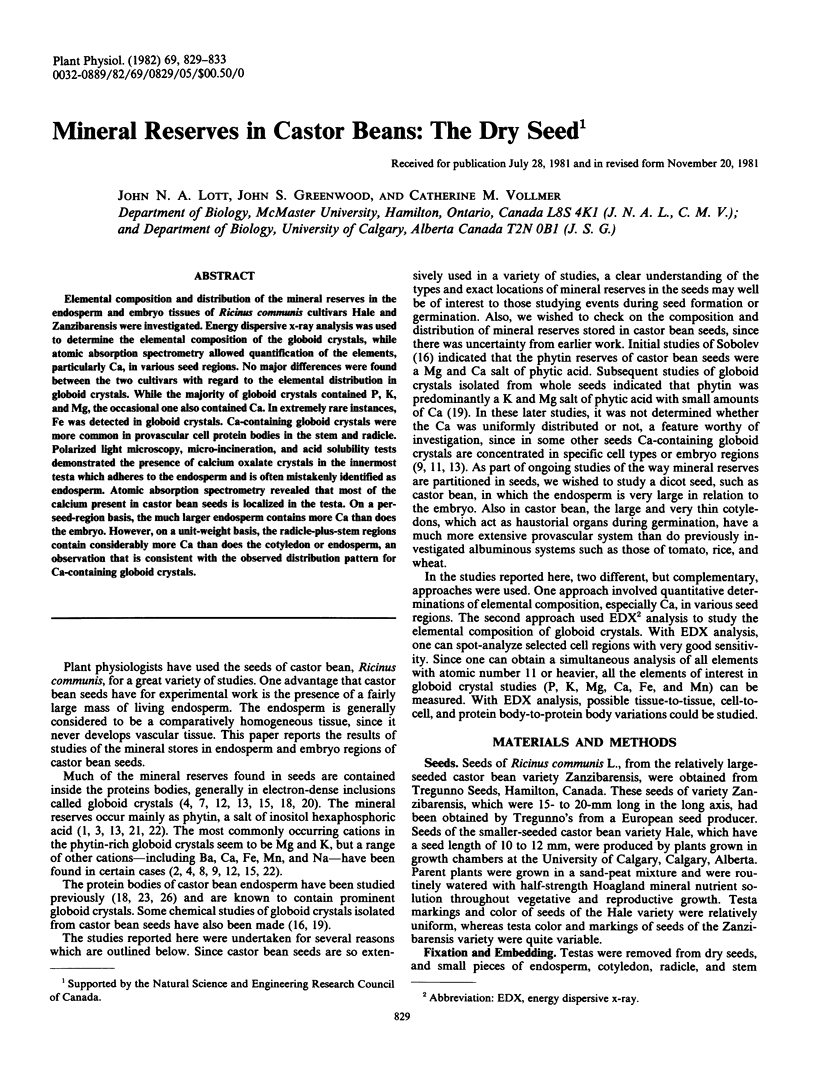
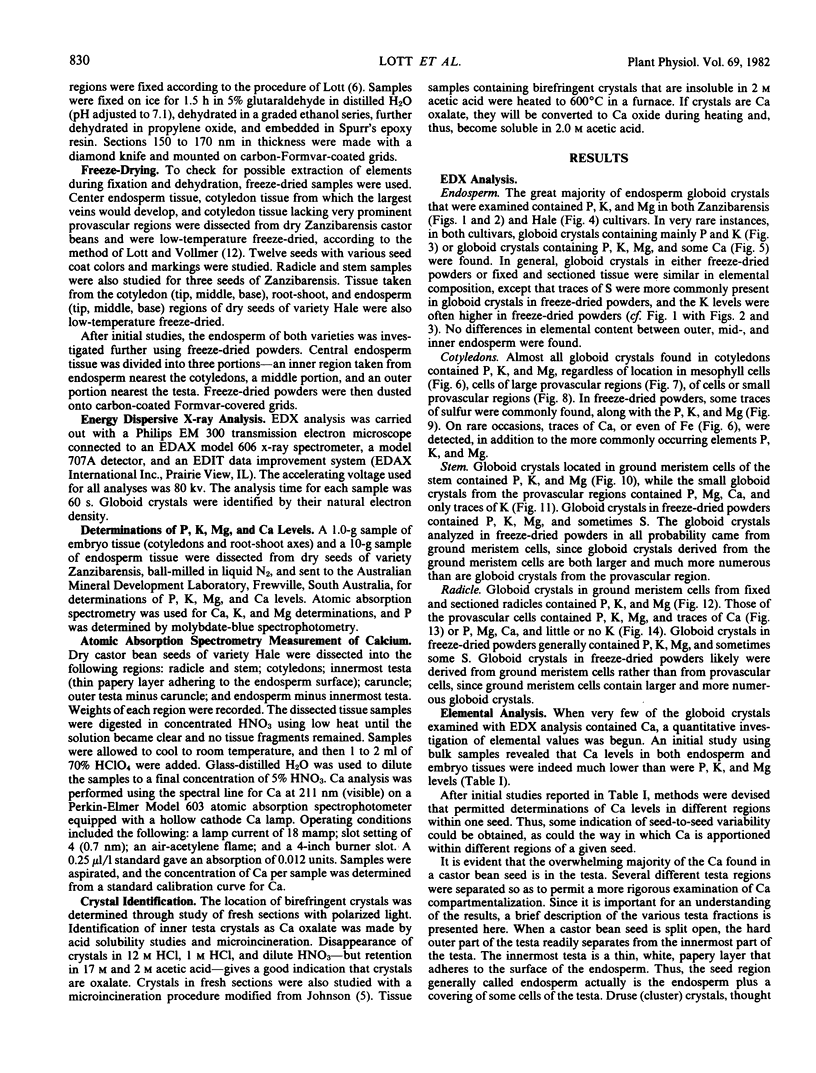
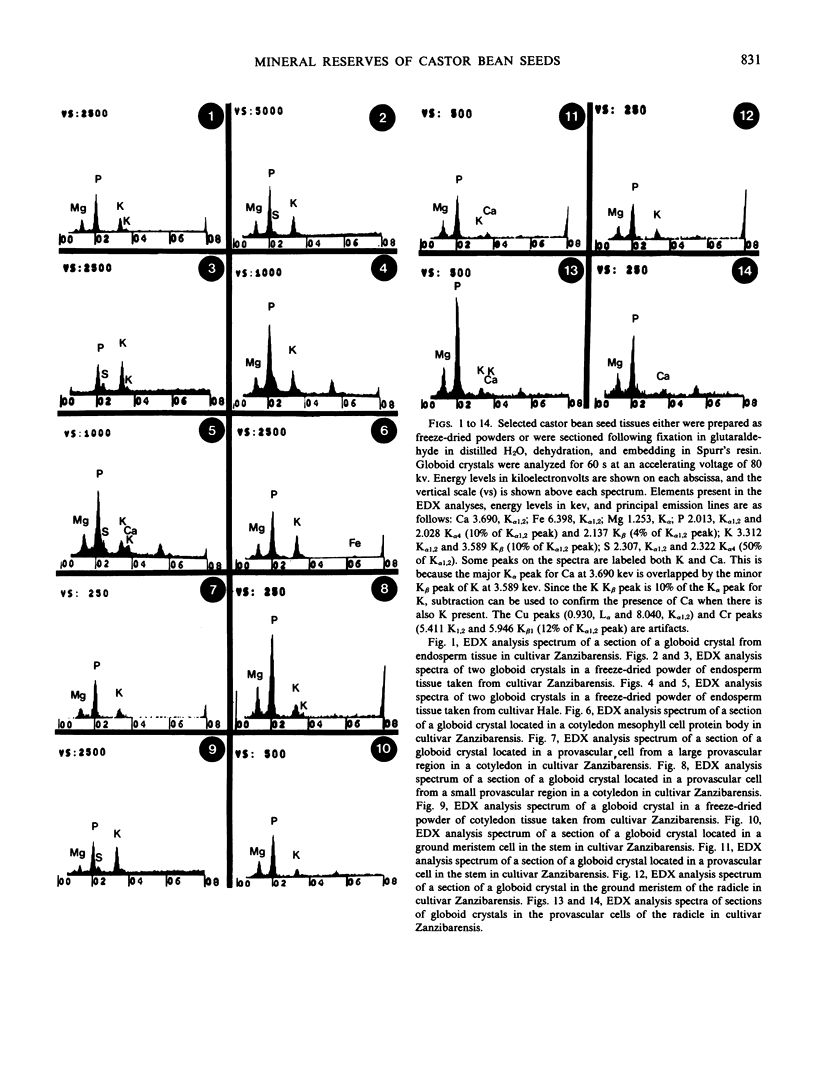
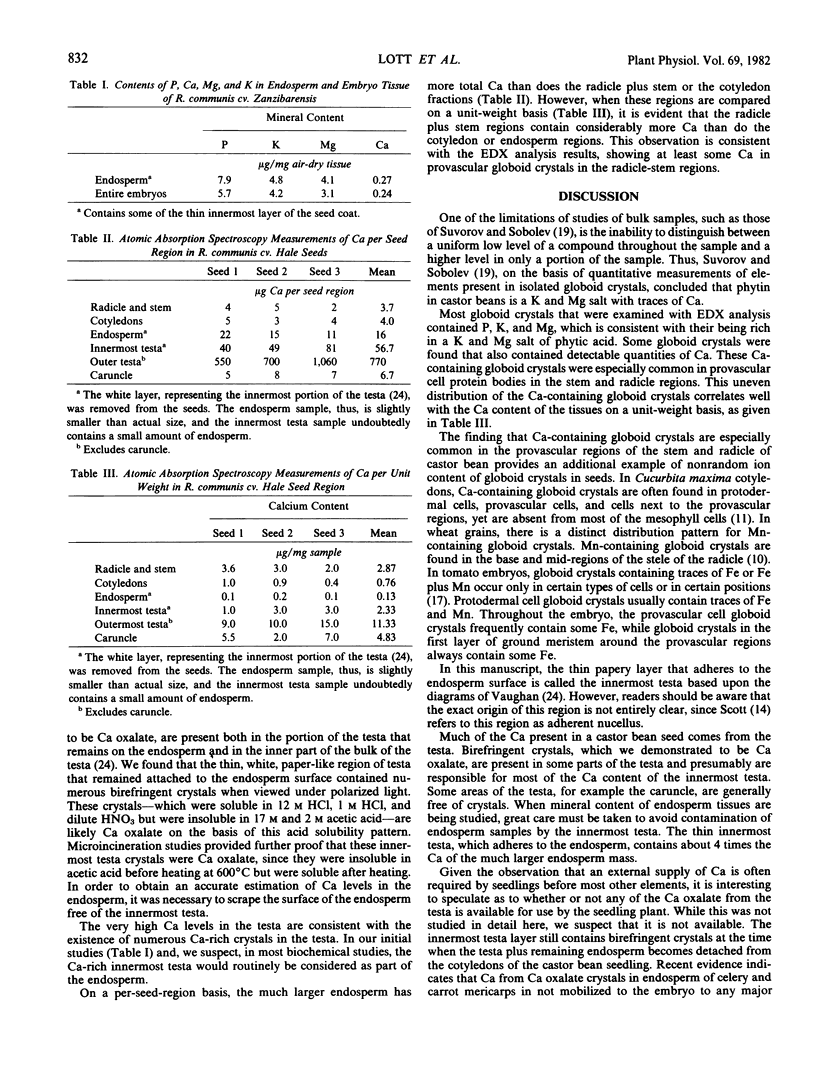
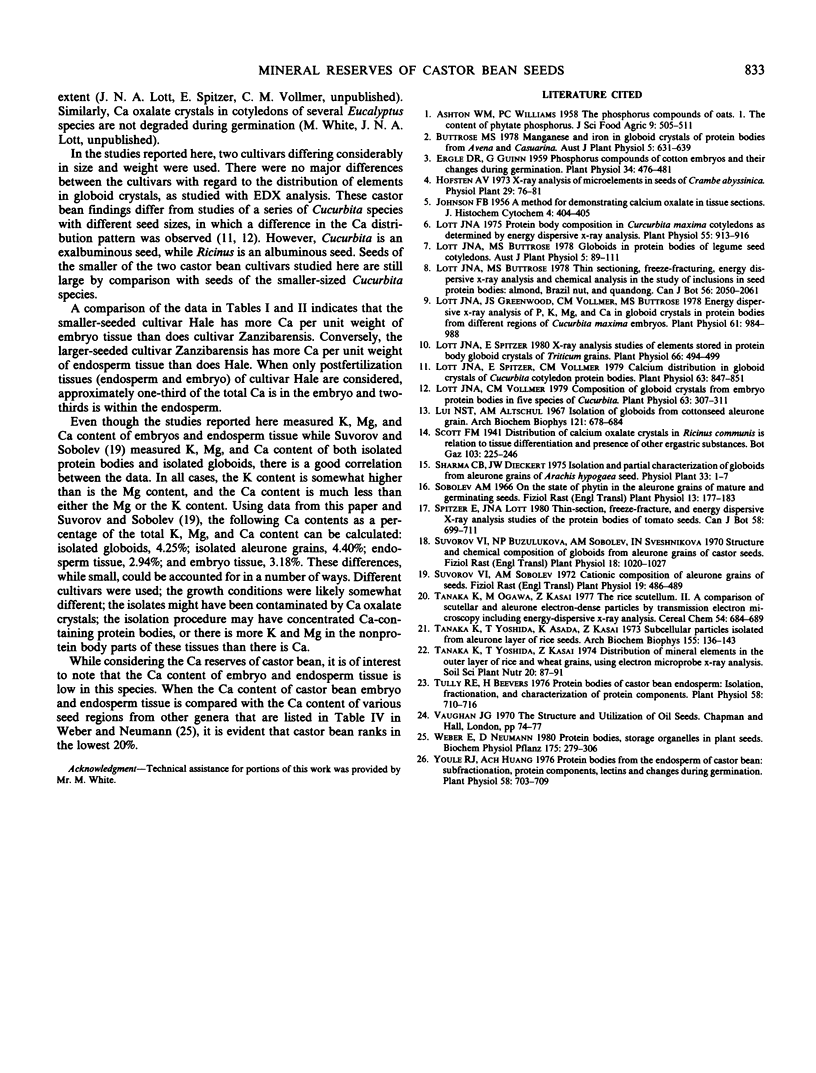
Selected References
These references are in PubMed. This may not be the complete list of references from this article.
- Ergle D. R., Guinn G. Phosphorus Compounds of Cotton Embryos and Their Changes during Germination. Plant Physiol. 1959 Jul;34(4):476–481. doi: 10.1104/pp.34.4.476. [DOI] [PMC free article] [PubMed] [Google Scholar]
- Lott J. N., Greenwood J. S., Vollmer C. M. Energy-dispersive x-Ray Analysis of Phosphorus, Potassium, Magnesium, and Calcium in Globoid Crystals in Protein Bodies from Different Regions of Cucurbita maxima Embryos. Plant Physiol. 1978 Jun;61(6):984–988. doi: 10.1104/pp.61.6.984. [DOI] [PMC free article] [PubMed] [Google Scholar]
- Lott J. N., Spitzer E., Vollmer C. M. Calcium distribution in globoid crystals of cucurbita cotyledon protein bodies. Plant Physiol. 1979 May;63(5):847–851. doi: 10.1104/pp.63.5.847. [DOI] [PMC free article] [PubMed] [Google Scholar]
- Lott J. N., Spitzer E. X-ray Analysis Studies of Elements Stored in Protein Body Globoid Crystals of Triticum Grains. Plant Physiol. 1980 Sep;66(3):494–499. doi: 10.1104/pp.66.3.494. [DOI] [PMC free article] [PubMed] [Google Scholar]
- Lott J. N., Vollmer C. M. Composition of globoid crystals from embryo protein bodies in five species of cucurbita. Plant Physiol. 1979 Feb;63(2):307–311. doi: 10.1104/pp.63.2.307. [DOI] [PMC free article] [PubMed] [Google Scholar]
- Lui N. S., Altschul A. M. Isolation of globoids from cottonseed aleurone grain. Arch Biochem Biophys. 1967 Sep;121(3):678–684. doi: 10.1016/0003-9861(67)90053-7. [DOI] [PubMed] [Google Scholar]
- Tanaka K., Yoshida T., Asada K., Kasai Z. Subcellular particles isolated from aleurone layer of rice seeds. Arch Biochem Biophys. 1973 Mar;155(1):136–143. doi: 10.1016/s0003-9861(73)80016-5. [DOI] [PubMed] [Google Scholar]
- Tully R. E., Beevers H. Protein bodies of castor bean endosperm: isolation, fractionation, and the characterization of protein components. Plant Physiol. 1976 Dec;58(6):710–716. doi: 10.1104/pp.58.6.710. [DOI] [PMC free article] [PubMed] [Google Scholar]
- Youle R. J., Huang A. H. Protein Bodies from the Endosperm of Castor Bean: Subfractionation, Protein Components, Lectins, and Changes during Germination. Plant Physiol. 1976 Dec;58(6):703–709. doi: 10.1104/pp.58.6.703. [DOI] [PMC free article] [PubMed] [Google Scholar]


